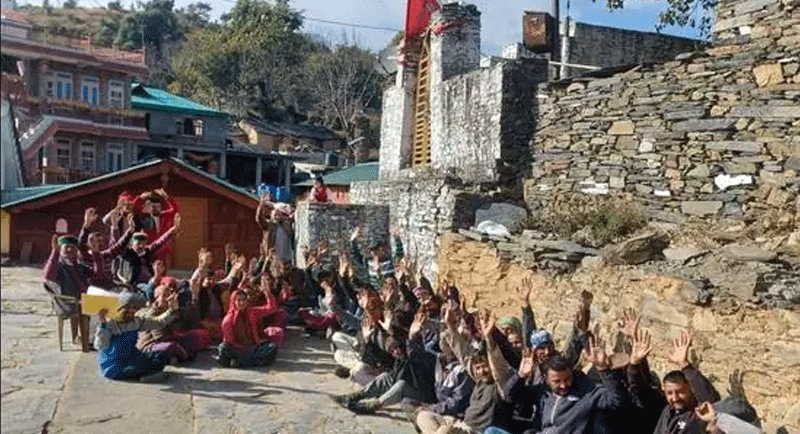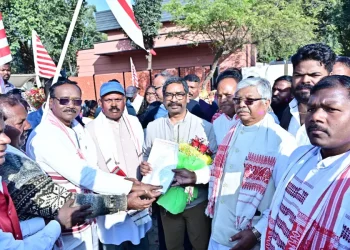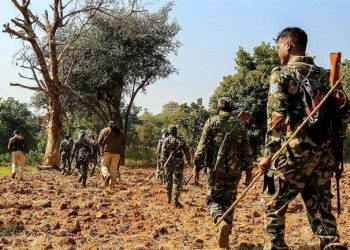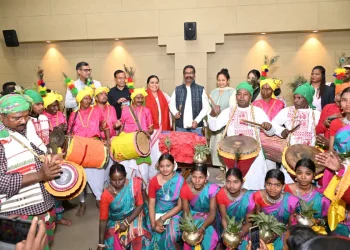Indian Tribal News Service
Shimla/New Delhi
Himachal Pradesh Chief Minister Jai Ram Thakur recently met Union Home Minister Amit Shah in New Delhi seeking a Schedule Area tag for the Trans-Giri region and an ST status for the 3 lakh-strong Hatti community residing there.
The Himachal Pradesh government has sent an ethnographical proposal to the Union Ministry of Tribal Affairs (MoTA), for the inclusion of Hatti community of Trans-Giri area of Sirmaur in the Scheduled Tribe list of Himachal Pradesh, State’s Tribal Affairs Minister Ram Lal Markanda informed the Assembly last week.
The matter is still pending with the MoTA, Markanda said while replying to a question. He said in March 2021, the MoTA had intimated that the criteria for declaration of scheduled area envisages preponderance of tribal population, compactness and reasonable size of the area, a viable administrative entity such as district, block or taluk, and economic backwardness of the area as compared to the neighbouring areas.
He said that in view of these conditions, population of the Trans-Giri area to be declared as Scheduled Area must be more than 50% whereas presently, ST community residing in the Trans-Giri area is only 0.20% as per the 2011 census.
In order to declare Trans-Giri as Scheduled Area, firstly the Hatti community residing there needs to be declared as a Scheduled Tribe for which the proposal has been sent.
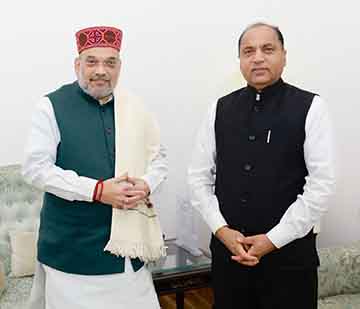
The declaration of the Trans-Giri region of Sirmaur district as a tribal area is a very genuine demand of the people of the area as about a population of three lakh, comprising 144 panchayats, will be benefitted. This would not only ensure an additional and special budget for this area, but also meet the long-pending demand of the locals, Jai Ram said
The demand is nothing new. It had started way back in 1967 when Jaunsar-Bawar areas of Uttarakhand, which share boundaries with the Trans-Giri area, were granted the Scheduled Area status.
The Trans-Giri area of Sirmaur district was part of the erstwhile Jaunsar Bawar area of Uttarakhand, where the Hatti community was granted the ST status way back in 1967. Both areas were part of the royal erstwhile Sirmaur state though Jaunsar Bawar area separated in 1815. Age-old traditions such as animal sacrifice make the Hatti a distinct community with modernisation yet to sink in.
The Government of Himachal Pradesh first sent a proposal in May, 2005 to the Union Ministry of Tribal Affairs seeking the status.
However, the Government of India in 1999 and the in 2002 clearly laid down the modalities for deciding the claims for inclusion in, exclusion from and other modifications in orders specifying Scheduled Castes and Scheduled Tribes lists.
As per the modalities, only those proposals which have been recommended and justified by the concerned State Government/UT Administration and concurred with by Registrar General of India (RGI) and National Commission for Scheduled Tribes (NCST) are to be considered and the legislation subsequently amended.
Accordingly, the proposal was processed and rejected as per these modalities and it was conveyed to the Himachal Pradesh government by MoTA in March 2017.
However, the Himachal Pradesh government in 2018 again requested to reconsider the already rejected proposal. But the existing criteria for declaring any area as ‘Scheduled Area’ under the fifth schedule are: (i) Preponderance of tribal population, (ii) Compactness and reasonable size of the area (iii) A viable administrative entity such as a district, block or taluk, and (iv) Economic backwardness of the areas as compared to the neighboring areas, the MoTA maintained giving little hope to the community,











